Lead Pipes
Do You Have Lead Pipes in Your Home? Water mains in the UK are not…
Read more24 hr Emergency Callout

Blog
At Coastal Drains, we take great pride in our expertise in all aspects of drainage, and we are more than happy to share this knowledge with our customers when they need it. This includes providing quick, easy guides on points of drainage systems, such as soakaways.
Below, we have provided you with everything you need to know about two different types of soakaway, and are ready and waiting for your call if you need further assistance.
If you already have a soakaway installed on your property and you know there is a problem, contact us and we can send our qualified drainage engineers to inspect it for you, before they come up with the best solution to get your drains flowing again.
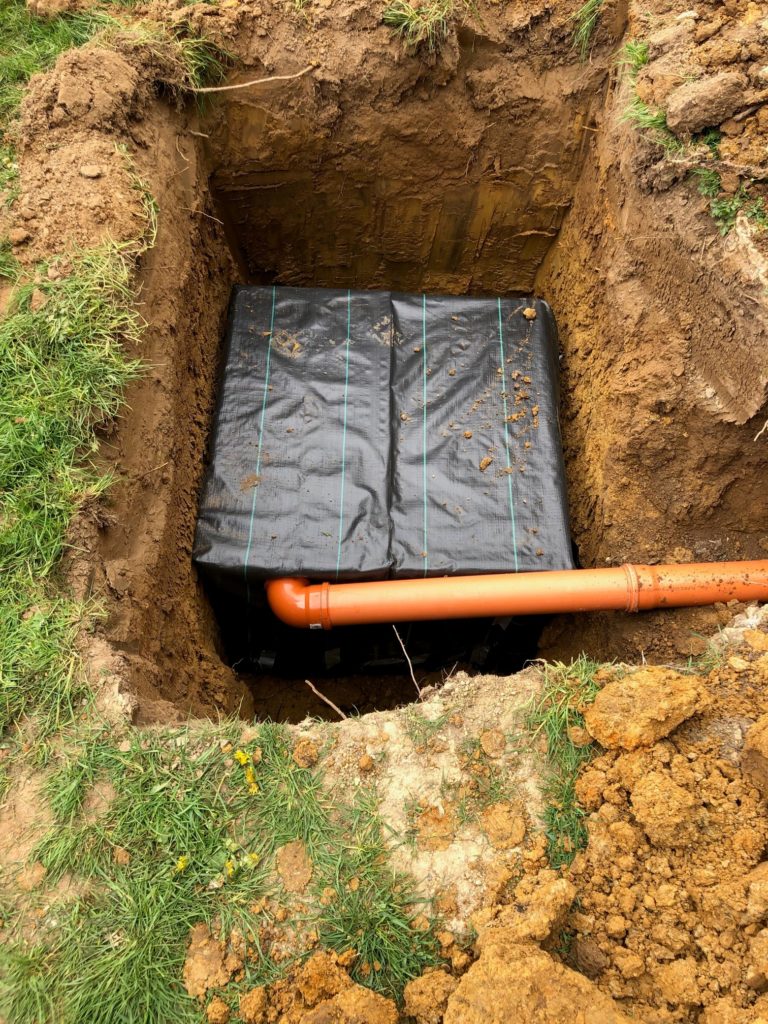
A soakaway is an efficient and low-environmental impact way of dealing with either foul or excess surface water in your drainage system. Depending on the type you have, the pipe which runs to your soakaway will either come directly from your property (usually a gutter), from an area where there is an overflow of surface water (via a system such as a French drain), or from a private system such as a septic tank or sewage treatment plant.
The purpose of a soakaway is to discharge and percolate the water coming through it back into the surrounding soil. In the case of a rainwater soakaway, this is to prevent the greater volume of water from bad weather (also called runoff or storm water) entering the main sewer system and overwhelming it. This process can also prevent the land around your property, such as your garden or drive, from flooding and not draining when it rains hard.
If you have a soakaway attached to a septic tank or sewage treatment plant, your soakaway will discharge the treated wastewater which has come from your property. This is one of the few legal remaining methods for disposing of treated wastewater from a septic tank, as by the new official Binding Rules, you cannot allow it to be released into a watercourse or ditch.
How your soakaway looks will depend on the type of soakaway that you have. Below, we have described some of the most common ways that your system can look:
Wastewater: This type of soakaway (also known as a drainage field) will always be connected to a septic tank or sewage treatment plant. They look like a series of perforated pipes laid in trenches in an area of land around your property, usually your garden or a field. The area around these pipes will then be covered over, usually with stones or gravel and turf, with the treated foul water being discharged into this land.
Rainwater: Rainwater soakaways will usually be made from plastic modular storage cells, often known as soakaway crates because they resemble old-fashioned milk crates. These are placed in a pit on your land, and may be connected to guttering from your house, or attached to a French drain (or another type of land drainage pipe) installed somewhere in your garden.
Before being hidden under the ground with a layer of shingle and turf, crates may also be covered over with a geotextile membrane, to prevent soil from infiltrating the system.
When you install a soakaway, you will be pleased to know that they come with a number of benefits attached that can help both you and your property:
Another benefit particularly attached to rainwater soakaways is that they are simple to install, with some professional advice on what to do to help guide the way. Below, we have explained this process for you, so that you can have your very own rainwater soakaway before you know it.
If you need to install a new drainage field soakaway for your septic tank or sewage treatment plant, either because it is blocked or damaged beyond repair, please contact us today. This task is one which is best handled by the professionals, as your entire system may also need replacing as well.
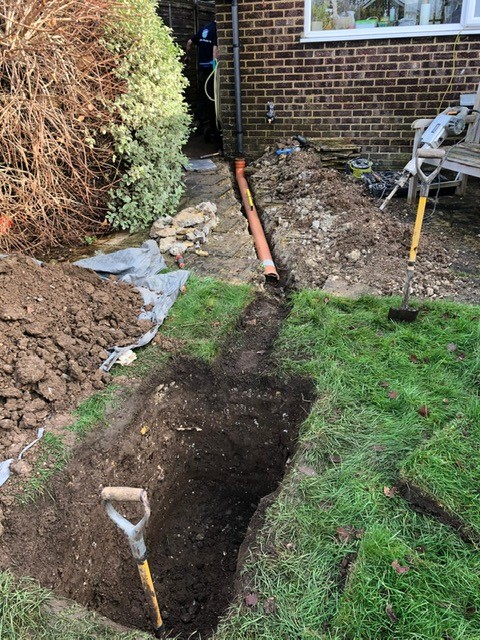
Before you begin trying to install or build a soakaway for excess rain and other surface water, it should be noted that it is recommended you do not carry out this work if you have property built on clay soils. This is because the water will not drain correctly, and may end up overflowing at a future point in time.
To check if your soil is right for the task, we suggest carrying out one of our own processes; a percolation test. To do this, choose a non-rainy day to dig a hole in the ground of your garden and fill it with water. Leave this for around four hours, and see how much water has drained away when you return.
If it has drained very little or not at all, then you do not have the right type of soil.
You should also check your local Building Regulations, to ensure that you are following all the necessary guidelines before carrying out any work.
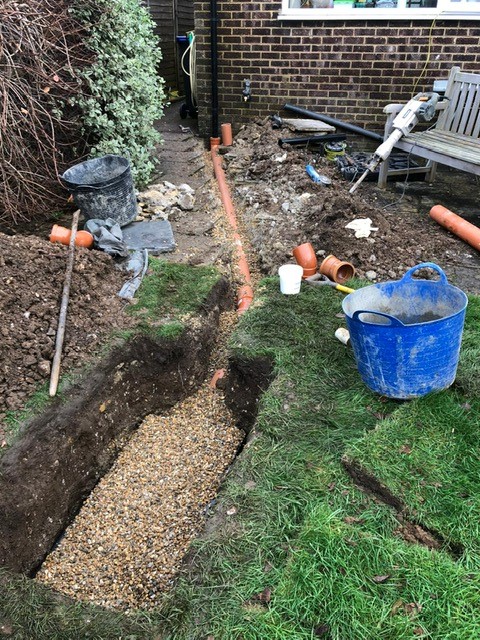
To begin the process, you should first choose a spot to dig your pit. This should, ideally, be a point which is at a lower level than any buildings on your property, as well as 5m from the walls of those buildings. The pit should also be 2.5m from your property boundary.
Once you have found your spot, carefully dig out the pit. Make sure that it has enough room not only for the size of soakaway crate that you have, but also a base, backfill and side fill.
Any whole turf dug up can be used when you have finished, so set it aside. After this, smooth out the bottom of the pit and remove any large obstacles, such as stones or tree roots, before filling the bottom with 150mm of compacted sharp sand.
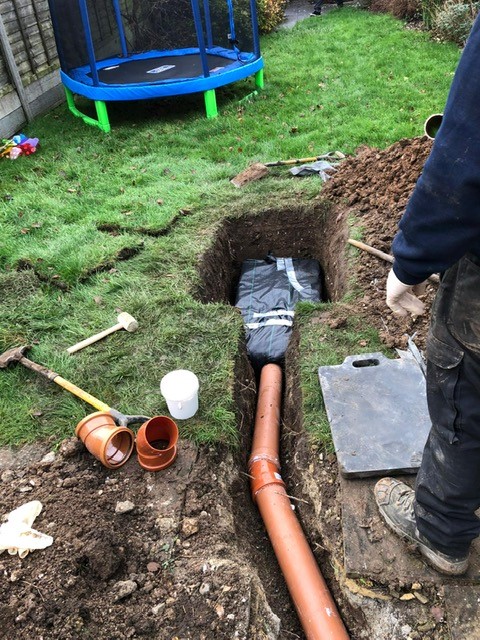
Assemble your crates and either wrap them in the geotextile membrane before lowering them into the pit, or spread the membrane out in the pit and lower the crates in, pulling the two together and taping them up after that. Make sure this membrane covers all outward faces, including the pipe entrypoint.
Find this pipe entrypoint and mark the centre of the hole, before using a Stanley knife to cut a cross in the membrane. Fold this back and introduce the pipe; be sure to push it in to about 150mm. The side fill will hold it in place, once it has been added.
Fill up the sides of your pit with 150mm of compacted sand or shingle, followed by 150mm more on top to cover the crates entirely. Cover that layer with ordinary soil (150mm if the installation is in a garden, 300m if it’s on a drive). Reapply any turf that you dug up before and the work will be complete.
There are not many options to clean or clear a blocked soakaway if you are planning on carrying out the work yourself.
You may be able to use drain rodding or hot water to flush the system through if you are having trouble with silt or mud in your rainwater soakaway pipe or its connected system (such as an attached French drain), but this will only be advisable if the problem is easily reached, such as from your garden or drive. Attempting more than this may lead to your system becoming damaged, which will cost you more to repair in the long run. To avoid this, it is highly recommended that you contact a professional drainage company to clean and clear the pipes for you.
If you need to clean or clear out a blocked soakaway for a private system, start by having the rest of the system professionally checked and emptied as well. Your soakaway may have become blocked because of excess waste coming through the chambers, which could mean that there is damage somewhere inside the tank. This must also be carried out professionally, as pumping out a septic tank safely requires both professional training and state-of-the-art equipment.
We are more than happy to carry out fast and efficient septic tank pumping services for homeowners who need it, so when you know your system needs our help, call us and we can be there in no time.
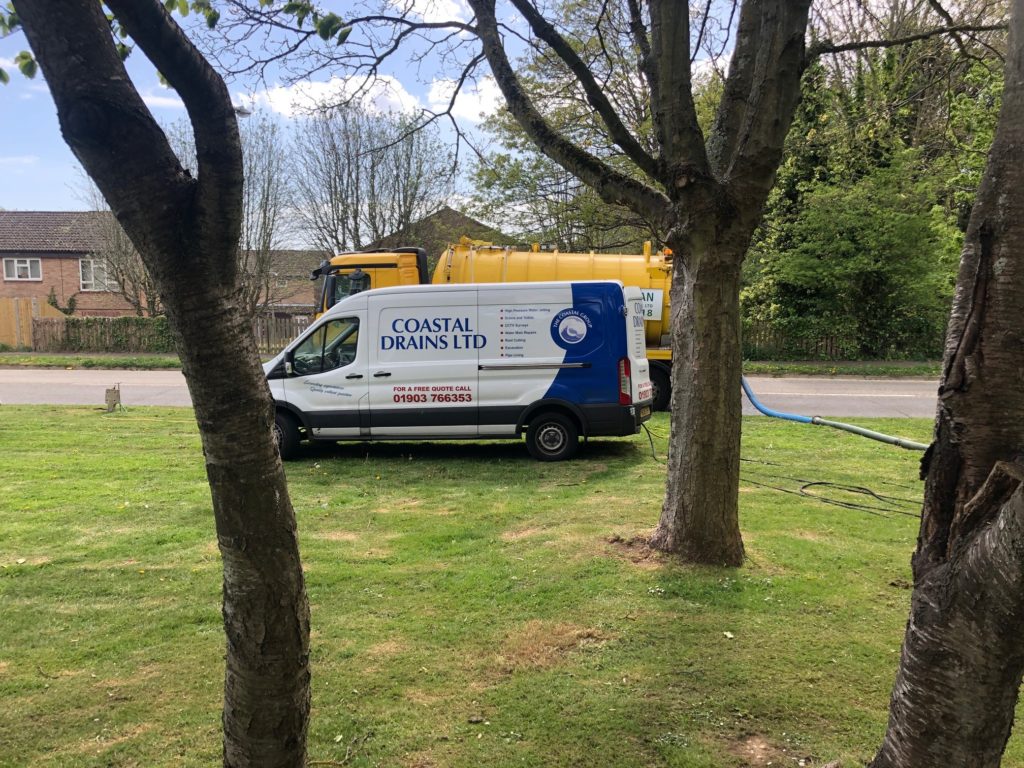
If you would like to know more about soakaways, either to carry away rainwater from your garden or drive or to service your septic tank, contact Coastal Drains today.
Our staff are always on hand to answer any questions you may have, and will also be able to send out our engineers as soon as possible if you wish to book your private system in for cleaning or clearance. If it is discovered that any parts of your system are too damaged to be returned to perfect working order, our dedicated team will even be able to replace them.
Call or email us today with any questions or queries you have, and we can help you get your drainage system working exactly as you need it.